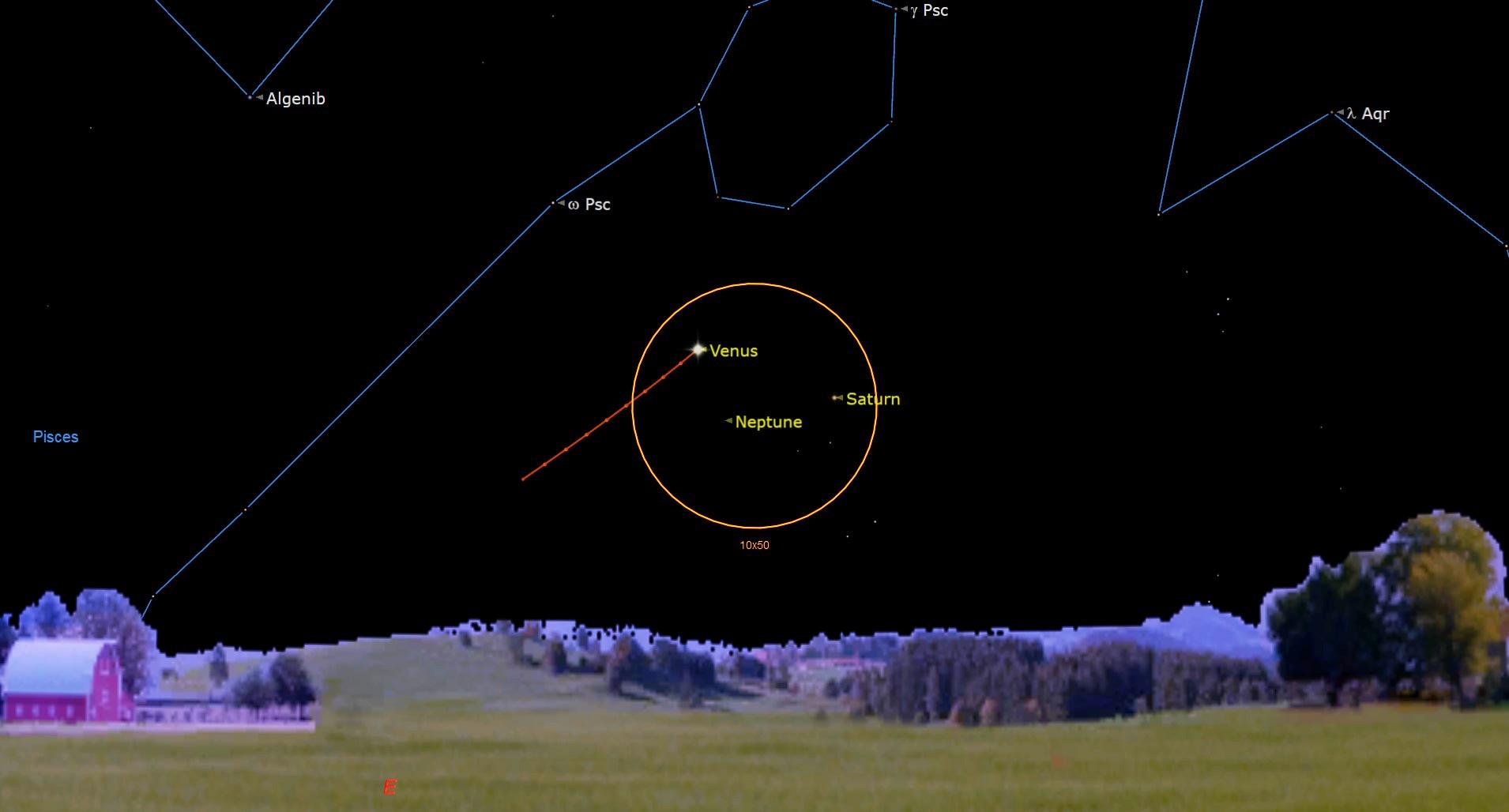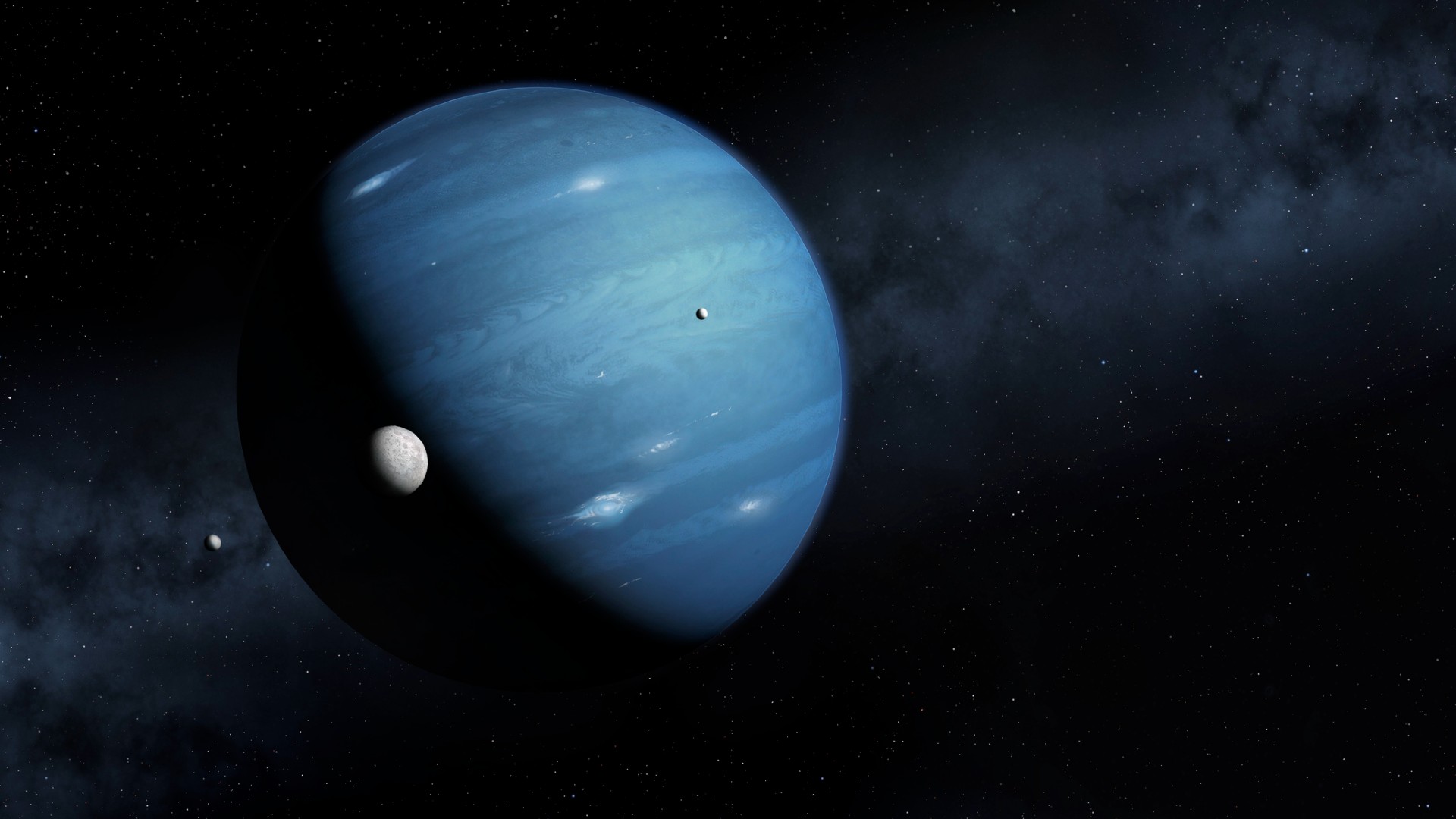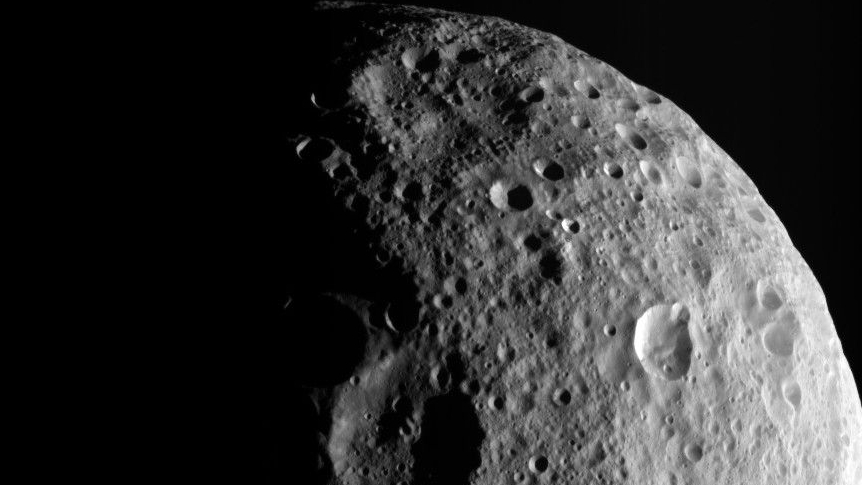Did Comet Crashes Help Spark Earth Life?

Billions ofyears ago, comets may have ferried life-sustaining water to our planet'ssurface, but that may not be all that we should thank these dirty snowballs for.Researchers are simulating comet impacts to see if they might help proliferatethe left-handedness in molecules that life on Earth depends upon.
There isevidence from meteorite studies that amino acids may have been deliveredto Earth from space.
"Thereis interest in how these building blocks came to be on primordial Earth,"says Jennifer Blank of the SETI Institute.
She and hercolleagues study comets as a second avenue for depositing these biological compoundson Earth. Their current work, which is supported by NASA's Exobiology andEvolutionary Biology Program, is looking at how the fireand brimstone of a comet impact may benefit the formation of complexmolecules of a particular handedness.
PrimordialLab
Life onEarth uses 20 amino acids to build up the thousands upon thousands of differentproteins that perform a myriad of cell functions. Astrobiologists often focuson the origins of amino acids in order to understand where life may have comefrom.
One of thefirst experiments aimed at reproducing the primordial Earth and its chemistrywas undertaken by Stanley Miller in 1953. He was able to synthesize amino acidsusing lightning-like discharges in a reducing atmosphere of methane, ammoniaand water ? similar to what exists on Jupiter.
Get the Space.com Newsletter
Breaking space news, the latest updates on rocket launches, skywatching events and more!
Since thatpioneering work, researchers have come to believe that Earth's early atmospherewas in fact more oxidative, containing mostly nitrogen and carbon dioxide.
"Withoutthe reducing atmosphere, the Miller mechanism becomes much less efficient at producingamino acids," Blank says.
One way toget around this is to make the amino acids in space and have them come crashingdown on-board meteorites and comets. There is ample evidence that meteorites carryamino acids. And just recently, an amino acid wasdiscovered in comet material brought back by NASA's Stardust spacecraft.
Blank andher colleagues were curious as to what happens to these biomolecules when the"space capsule" they are riding in smacks into the Earth.
The teamhas focused their work on comets, rather than meteors. Although comets are lessprevalent in the inner solar system, they have a few possible advantages overtheir dry rocky counterparts when it comes to delivering biologically relevantmaterial to a planet's surface.?
First ofall, a comet impact is thought to be less harsh than that of a meteoritebecause comets are less dense, which means their impact generates lowertemperatures and pressures. Blank says that the blow would be further softenedon a comet arriving at an oblique angle.
The secondadvantage of comets is that they carry water, which is key for the chemical reactionsthat beget life. When the comet lands, its ice melts, forming a little puddlenear the crash site.
"Cometsgive you all the ingredients, like a compact evolution kit," Blank says.
Of course,the primordial Earth was stocked with its own water, but "if a comet ormeteor were to land in the ocean, any interesting chemistry would quickly bediluted away," says co-investigator George Cooper of NASA Ames. A cometimpact on dry land would give the organic molecules on board the chance to amplifytheir numbers in the localized puddle.
LikeShooting Comets in a Barrel
To simulatea comet hitting pay dirt, Blank and her colleagues fire a bullet into a metalcontainer the size of a can of beans. In this scenario, the container is thecomet and the bullet is the hard ground. Inside the container is a smallchamber about as big as a quarter, in which the scientists place a liquidsample of organic molecules.
"It'snot super high-tech, but it is rather involved as far as the structuralcomplexity is concerned," Blank explains.?
She and hercolleagues take special care to ensure that the metal container doesn't leakfrom the impact. Afterwards, they carefully drill down to the chamber and drawout their "shocked" liquid sample.
In 2001, theteam reported that amino acids placed in the comet simulator were still intactfollowing the impact, which surprised other scientists.
"It'sthe coolest thing," Blank recounts. "People told us, 'Nothing isgoing to survive, so why should we fund you?'"
Normally,the 1,000-degree-temperatures inside the smashed "comet" woulddestroy any amino acids. But Blank believes the temperature rises and falls toofast for the molecules to react. There is also enormous pressure of 10,000atmospheres that may be preventing the breakdown of compounds.
However,the amino acids did more than just survive the crash. They also started bondingtogether to form short chains up to 5-amino-acids long.
Thiscomet-induced bonding may have played a role in the origin of life. Typically,there is an energy barrier that prevents amino acids from latching together.Indeed, organisms require enzymes to overcome this barrier when puttingtogether their proteins. But enzymes themselves are proteins, so there is a bitof a chicken-and-egg problem: how do you build up proteins before you haveproteins to help build them up?
It isperhaps conceivable that a comet impact fused together the first rudimentary proteinpieces (called "peptides") and thereby got the whole ball rolling.
Blank's groupis now running simulations to see if they can model how the energy barrier toamino acid bonding changes under the high temperature and pressure of a cometimpact.
MolecularCrash-Test Dummies
Thescientists are also planning to do more comet crash tests. They will be lookingat sugars, which play an important part in the structure of DNA and RNA. Andthey will be looking at amino acids again, this time studying whether thehandedness of comet passengers might be affected by the impact.
In regard tothe handedness, Blank thinks there might be a difference in how the amino acidshook up together during the impact. Left-handed amino acids may form chainsmore readily with other left-handed amino acids, rather than with right-handed ones.
Such a preference,if it exists, might be able to enhance a slight overabundance of one hand (aso-called enantiomeric excess) in the original comet material. This might explainwhy organisms only use left-handed amino acids to form proteins.
"Itwill be a great discovery if they can get definite evidence as to formation ofsugars, peptides, or enantiomeric excess," says Yoshihiro Furukawa of Tohoku University in Japan, who was not involved with this work.
He says theone concern will be contamination of the sample with the left-handed biology weare already familiar with. He suggests using amino acids made with carbon-13,so that any subsequent contamination with normal carbon-12-based amino acidswill be easy to detect.
- Video - Collision Watch: Hunting Asteroids and Comets
- Are We Drinking Comet Water?
- Was Johnny Appleseed a Comet?
Join our Space Forums to keep talking space on the latest missions, night sky and more! And if you have a news tip, correction or comment, let us know at: community@space.com.

Michael Schirber is a freelance writer based in Lyons, France who began writing for Space.com and Live Science in 2004 . He's covered a wide range of topics for Space.com and Live Science, from the origin of life to the physics of NASCAR driving. He also authored a long series of articles about environmental technology. Michael earned a Ph.D. in astrophysics from Ohio State University while studying quasars and the ultraviolet background. Over the years, Michael has also written for Science, Physics World, and New Scientist, most recently as a corresponding editor for Physics.









